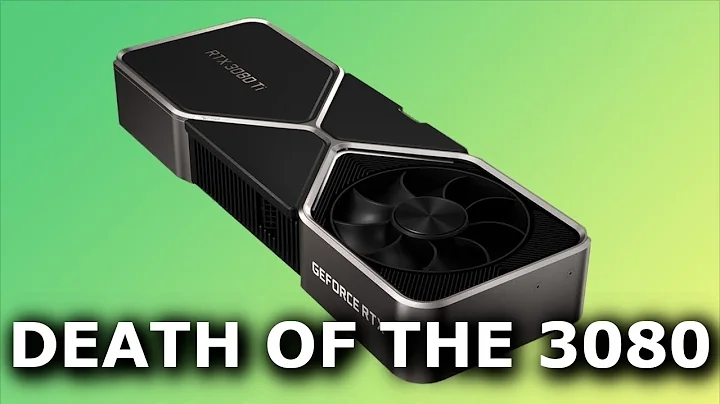Unveiling the Significance of 1% and 0.1% Lows in Gaming Benchmarks
Table of Contents
- Introduction
- What are 1% and 0.1% lows?
- Why are minimum frame rates inaccurate?
- The importance of consistent frame times
- Understanding frame time measurements
- How do 1% and 0.1% lows affect gameplay?
- The significance of the gap between lows and average frame rate
- Why accurate results are crucial for older hardware
- Implementing 1% and 0.1% lows in benchmarking videos
- Conclusion
Understanding the Importance of 1% and 0.1% Lows in Gaming Benchmarks
🎮 Introduction
In the world of gaming, benchmarking is essential for evaluating the performance of hardware. Traditionally, gamers have focused on minimum frame rates to assess gameplay smoothness. However, minimum frame rates alone do not provide a complete picture of the gaming experience. This has led to the emergence of 1% and 0.1% lows as additional metrics to consider. In this article, we will dive into the world of 1% and 0.1% lows, explore their significance, and understand why they are essential in accurate benchmarking.
🔍 What are 1% and 0.1% lows?
1% and 0.1% lows refer to the minimum frame rates experienced during gameplay, calculated by analyzing individual frames' on-screen time. While average frame rates give an overall impression, 1% and 0.1% lows focus on the worst-performing frames, representing the bottom one percent and 0.1 percent of all frames, respectively. These metrics help measure frame time consistency and identify potential performance issues, such as stuttering, which can significantly impact the gaming experience.
❌ Why are minimum frame rates inaccurate?
To understand the significance of 1% and 0.1% lows, we must acknowledge the limitations of relying solely on minimum frame rates. When assessing a game's performance, the minimum frame rate may give a misleading impression. For instance, if a game runs at an average of 37 frames per second, the minimum frame rate might be 13 frames per second, occurring only once during gameplay. This isolated drop does not necessarily hinder the overall experience, making the minimum frame rate seem worse than it actually is.
⏱️ The importance of consistent frame times
When playing a game, consistent frame times are crucial for a smooth and immersive gaming experience. Each frame is composed of a certain on-screen time, expressed in milliseconds. To ensure smooth gameplay, it is ideal to have a consistent frame time between each frame. However, if frame times fluctuate significantly, it can result in noticeable stuttering, impacting the overall gameplay flow.
📏 Understanding frame time measurements
To grasp the concept of 1% and 0.1% lows, we need to comprehend frame time measurements. Let's consider a scenario where every frame has a specific on-screen time. For example, frame 1 may be displayed for 16 milliseconds, frame 2 for 6 milliseconds, and frame 3 for 16 milliseconds, and so on. Consistency in frame times provides a more seamless gaming experience. However, a different PC running the same game with a better average frame rate may have more inconsistent frame times. For example, frame 1 and 2 might have consistent on-screen times, but frame 3 suddenly jumps to 70 milliseconds before dropping back to 16 milliseconds for frame 4. These inconsistent frame times can result in noticeable stuttering, impacting the overall gameplay smoothness.
🎮 How do 1% and 0.1% lows affect gameplay?
1% and 0.1% lows have a significant impact on the gaming experience. The larger the gap between the lowest one percent and 0.1 percent frame rates and the average frame rate, the more likely users are to experience stuttering. If these three metrics are far apart, it indicates inconsistent performance. Therefore, it is crucial to analyze 1% and 0.1% lows to ensure a smoother and more enjoyable gaming experience.
⚙️ The significance of the gap between lows and average frame rate
The gap between the 1% and 0.1% lows and the average frame rate holds great importance in assessing gaming performance. A smaller gap signifies more consistent frame times, indicating a smoother gameplay experience. On the other hand, a larger gap suggests more significant fluctuations between frames, which can result in stuttering and negatively impact the overall gameplay quality.
📈 Why accurate results are crucial for older hardware
Accurate benchmarking is particularly crucial for older hardware. While a graphics card may seem to perform decently with an average frame rate of 30 frames per second, it is essential to consider the accompanying factors. Older hardware may exhibit a higher likelihood of stuttering despite the seemingly acceptable average frame rate. By incorporating 1% and 0.1% lows, benchmarking provides a more accurate representation of the overall gaming experience.
✅ Implementing 1% and 0.1% lows in benchmarking videos
Recognizing the significance of 1% and 0.1% lows, it has become essential to include these metrics in benchmarking videos. By displaying both the minimum frame rate and the lows, content creators provide viewers with a comprehensive understanding of a game's performance. This allows users to make informed decisions based on their preferences and hardware capabilities.
🔚 Conclusion
In conclusion, 1% and 0.1% lows are crucial metrics that go beyond average frame rates in assessing gaming performance. They provide insights into the consistency of frame times and help identify potential stuttering issues. By incorporating these metrics into benchmarking videos, content creators can offer a more accurate representation of the gaming experience. Understanding the significance of 1% and 0.1% lows allows gamers to make informed decisions when choosing hardware and optimizing their gameplay.
Highlights:
- 1% and 0.1% lows go beyond average frame rates in assessing gaming performance.
- Minimum frame rates alone do not provide a complete picture of the gaming experience.
- Consistent frame times are crucial for smooth and immersive gameplay.
- Larger gaps between lows and average frame rates indicate more potential for stuttering.
- Accurate benchmarking is crucial for older hardware to avoid potential stuttering issues.
- Implementing 1% and 0.1% lows in benchmarking videos provides a comprehensive assessment of Game performance.
 WHY YOU SHOULD CHOOSE TOOLIFY
WHY YOU SHOULD CHOOSE TOOLIFY
































